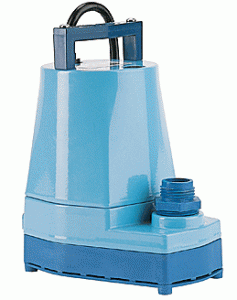The Unknown’s of a Spring Opening Revealed!
You know what that means; It’s time to pump off your pool! As spring brings warmer weather (and rain), we bide our time, waiting for the perfect moment to open our pools. Since we closed the pool when it was spotless, perfectly balanced, and chemically treated for hibernation, the water should be clear (if not we’ll do a blog about clearing up a pool in the spring soon I promise). We just need to take the cover off and get the water moving, right? Those of you who know, know that getting the cover off is easier said than done.
Get rid of the water on your cover!
Now, most people are using mesh safety covers to tuck their pools in (your blog article is coming so stay tuned), but above ground pool owners who have little other option, and the inground owners who cling to their standard (or tarp style) don’t have the luxury of a cover that sheds water. The whole purpose of the standard cover is to form a barrier over the pool for the winter that keeps the pool out of the sun, free from debris, and stop rain and snow melt from mixing with our carefully maintained pool water (or so we think). The effect is the snow melt, rain, rain, and more rain accumulates on the cover and needs to be pumped off before pulling the cover off.
The water on top of the cover is not treated as your pool water is. It is not kept out of the sun like the water under the cover. That water is stagnant, full of wind blown debris, and putting stress on the cover itself. Every pool owner should have a small cover pump, submersible pump, a siphon, or some way to get that water off. Ideally, this should be something we do periodically during the winter, and for best results come spring, do this at least a couple times over the off season.
RULE #1: Whether you’re pumping once a month or once a winter, remember to compensate for displacement.
**DISPLACEMENT COMPENSATION:
The more water you pump off the cover, the more water you will add to the pool.**
The water level you see on top of the pool cover IS your current water level under the cover. The more strain the cover is put under, the less watertight it becomes. As you are pumping water off the top of the cover, you will be losing pool water as well. STICK A RUNNING GARDEN HOSE UNDER THE COVER TO MAKE UP FOR WATER DISPLACEMENT. I’m not yelling, but If you don’t put a hose under the cover, and you notice the water has dropped significantly when you are done, you do not have a leak. Do not panic. You have just learned first hand how water displacement works.
Covers that have holes in them (even very small holes) should not be reused. The barrier is down and you’re mixing pool water with cover water already. The displacement you will experience with a swiss cheese cover could be catastrophic.
Safety is always paramount. If using an electric pump, plug into a GFI protected outlet, and inspect the cords for nicks, cuts, cracks, and frays. Be careful leaning over to place the pump. Don’t pump alone. Don’t drink and pump (seriously). The last thing you want to do is fall in your closed pool.
 Pool Cover Tips:
Pool Cover Tips:
- Make sure the drain hose is long enough to get a good distance away from the pool and from the house (preferably to the gutter, ditch or drain field).
Scoop as much debris and leaves and solid whatnot out before and during a pump off. Anything that’s large enough to block the pump intake is going to be bad for the pump and slow your progress. Plus left unchecked, the debris can cause damage to the cover itself. - Brush the cover as you pump off. The small stuff that is suspended will likely pass right through the pump and be drained out.
- Keep a close eye on the pool as you pump it off. Depending on the method, the amount of water being pumped off, and the size of the pool, the time it takes may be an hour, two hours, or a whole day. If you can’t be around to monitor your progress, stop pumping. You can attack this task in stages.
By pumping the water off the cover, you’ve made it safe to remove the cover without contaminating your pool. The pre-open procedure can save you hundreds of dollars and hours of time. Pools are for relaxing in, not working on. Just remember: A little elbow grease can make for a more relaxing summer!



Recent Comments